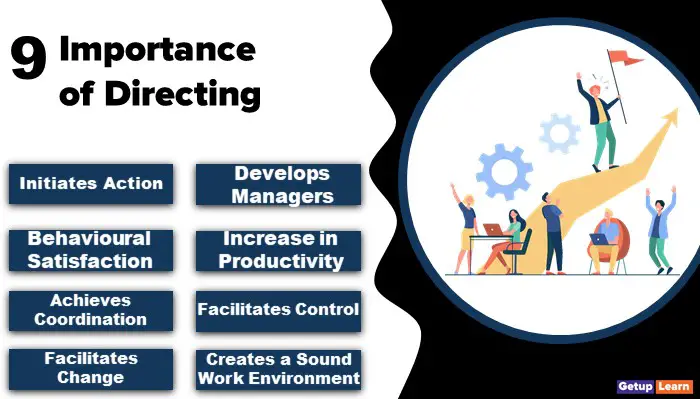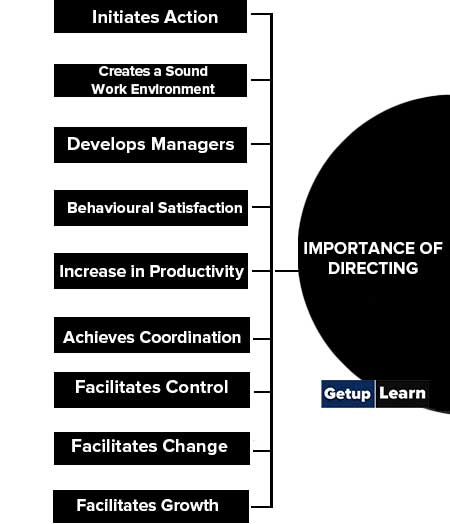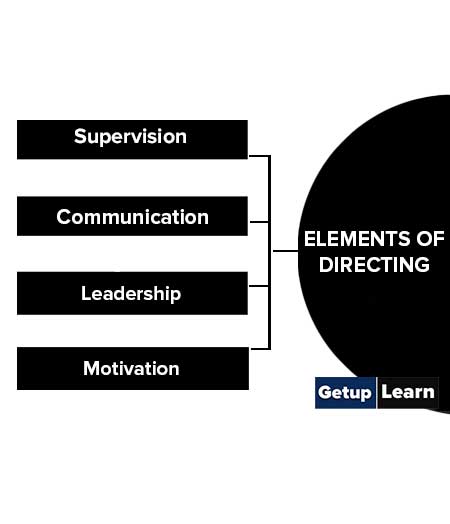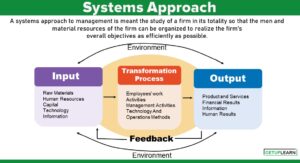Table of Contents
What is Directing?
Direction is the interpersonal aspect of managing by which subordinates are led to understand and contribute effectively and efficiently to the attainment of enterprise objectives.
The manager must stimulate action by giving direction to his subordinates through orders and also supervising their work to ensure that the plans and policies achieve the desired actions and results.

Importance of Directing
Direction is one of management’s most complex functions, which can be learned and perfected only through long experience. It is the central point around which the accomplishment of goals takes place.
It is also called an activation function of management because it is through the direction the operation of an enterprise actually starts. These are the importance of directing:
- Initiates Action
- Creates a Sound Work Environment
- Develops Managers
- Behavioural Satisfaction
- Increase in Productivity
- Achieves Coordination
- Facilitates Control
- Facilitates Change
- Facilitates Growth

Initiates Action
Direction initiates an action that motivates people to convert resources into productive outputs. It gives substance to the managerial function of planning, Organizing, Staffing and controlling. People learn to manage the resources in the most effective way that results in their optimum utilization.
Creates a Sound Work Environment
If the direction is issued in consultation with employees, it creates an environment of understanding where people work to their maximum potential, willingly and enthusiastically to contribute towards organizational goals.
Develops Managers
Managers who are personally motivated to work can also direct others to work. Managers develop their skills and competence. Motivation, leadership and communication help in bringing people together. This is beneficial for both the employees and the organization. Direction, thus, prepares future managers.
Behavioural Satisfaction
Since direction involves human behaviour and psychology, employees feel behaviorally satisfied and personally inspired to achieve organizational goals.
Increase in Productivity
Personally satisfied employees contribute towards the output and efficiency of the organization. Direction gets the maximum out of subordinates by exploiting their potential and increasing their capabilities to work.
Achieves Coordination
Directing aims at continuous supervision of activities. It achieves coordination by ensuring that people work towards planned activities in a coordinated manner. It integrates the action of employees that increase their understanding of mutual interdependence and their collective effort to achieve organizational goals.
Facilitates Control
Coordination brings actual performance in conformity with planned performance. The controlling function is, thus, facilitated through the effective direction.
Facilitates Change
Direction helps in introducing change in the organization structure and adapting the organization structure to the external environment. People are not easily receptive to changes. Direction helps in changing the attitude of people in a positive way.
Facilitates Growth
An organization open to change is responsive to growth. Direction harmonizes physical, financial and human resources, balances various parts of the organization and creates commitment amongst people to raise their standards of performance.
Elements of Directing
Directing deals with interpersonal relations. It is the doing or implementing phase of management. Hence it is also called management-in-action. All the activities related to directing can be categorized into four different elements of directing:

Supervision
Supervision is an important element of directing. It implies overseeing the work of subordinates in order to guide and regulate their efforts. Supervision is very important at the operating level of management.
Supervision is in direct contact with the workers and acts as the link between workers and management. The purpose of supervision is to ensure that subordinates perform their tasks according to prescribed procedures and as efficiently as possible.
Communication
It is the process of passing information viewpoints, facts, ideas, opinions and understanding from one person to another. It is a two-way process and is complete when there is some response from the receiver of information. Communication may take several forms orders, instructions, reports, suggestions etc.
Leadership
Leadership may be defined as the process by which a manager guides and influences the work of his subordinates. The success of every enterprise is dependent upon the quality of its leadership.
For example, Reliance would not have attained its present success but for the able leadership of Dhiru Bhai Ambani. A leader exercises his influence over the followers through the use of informal authority or power.
Motivation
Motivation means inspiring subordinates with zeal to do work for the accomplishment of organizational objectives. A manager should make appropriate use of motivational tools to actuate the subordinates to work harmoniously towards the achievement of organizational goals.
Different people are motivated by different types of rewards, which can be financial incentives or non-financial incentives.
What is the importance of directing?
The following are the importance of directing:
1. Initiates Action
2. Creates a Sound Work Environment
3. Develops Managers
4. Behavioural Satisfaction
5. Increase in Productivity
6. Achieves Coordination
7. Facilitates Control
8. Facilitates Change
9. Facilitates Growth.
What are the elements of directing?
The following are the elements of directing:
1. Supervision
2. Communication
3. Leadership
4. Motivation.


















